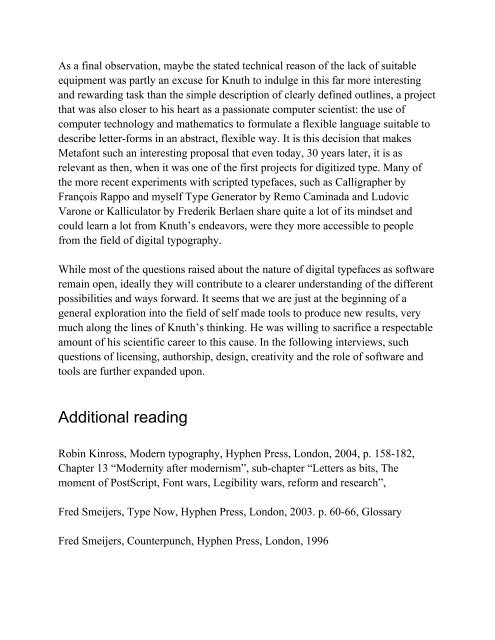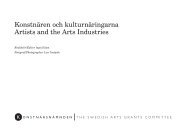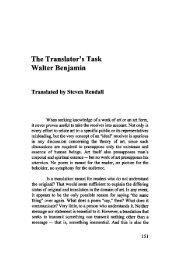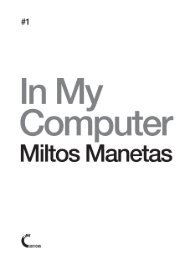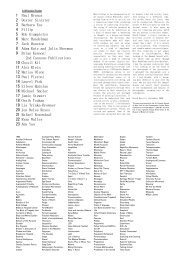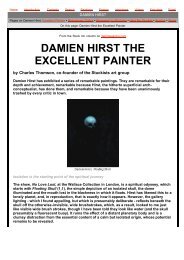Jürg Lehni – Typeface As Progamme - Harald Peter Ström
Jürg Lehni – Typeface As Progamme - Harald Peter Ström
Jürg Lehni – Typeface As Progamme - Harald Peter Ström
You also want an ePaper? Increase the reach of your titles
YUMPU automatically turns print PDFs into web optimized ePapers that Google loves.
<strong>As</strong> a final observation, maybe the stated technical reason of the lack of suitable<br />
equipment was partly an excuse for Knuth to indulge in this far more interesting<br />
and rewarding task than the simple description of clearly defined outlines, a project<br />
that was also closer to his heart as a passionate computer scientist: the use of<br />
computer technology and mathematics to formulate a flexible language suitable to<br />
describe letter-forms in an abstract, flexible way. It is this decision that makes<br />
Metafont such an interesting proposal that even today, 30 years later, it is as<br />
relevant as then, when it was one of the first projects for digitized type. Many of<br />
the more recent experiments with scripted typefaces, such as Calligrapher by<br />
François Rappo and myself Type Generator by Remo Caminada and Ludovic<br />
Varone or Kalliculator by Frederik Berlaen share quite a lot of its mindset and<br />
could learn a lot from Knuth’s endeavors, were they more accessible to people<br />
from the field of digital typography.<br />
While most of the questions raised about the nature of digital typefaces as software<br />
remain open, ideally they will contribute to a clearer understanding of the different<br />
possibilities and ways forward. It seems that we are just at the beginning of a<br />
general exploration into the field of self made tools to produce new results, very<br />
much along the lines of Knuth’s thinking. He was willing to sacrifice a respectable<br />
amount of his scientific career to this cause. In the following interviews, such<br />
questions of licensing, authorship, design, creativity and the role of software and<br />
tools are further expanded upon.<br />
Additional reading<br />
Robin Kinross, Modern typography, Hyphen Press, London, 2004, p. 158-182,<br />
Chapter 13 “Modernity after modernism”, sub-chapter “Letters as bits, The<br />
moment of PostScript, Font wars, Legibility wars, reform and research”,<br />
Fred Smeijers, Type Now, Hyphen Press, London, 2003. p. 60-66, Glossary<br />
Fred Smeijers, Counterpunch, Hyphen Press, London, 1996


